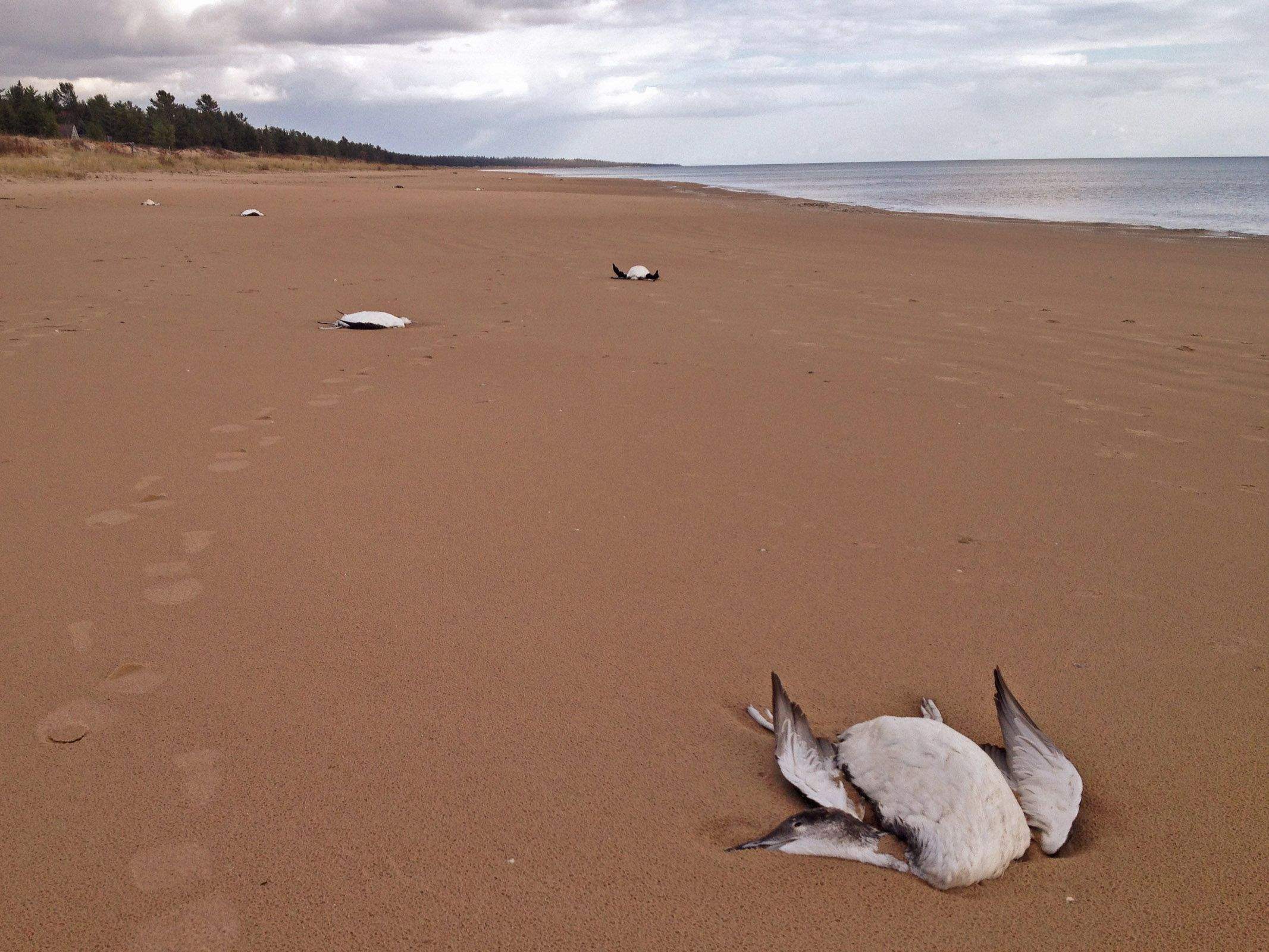
© Common Coast Research and ConservationDead loons lie along the Lake Michigan shoreline.
The rapidly changing ecology of the Great Lakes Basin, brought on in large part by non-native, invasive species, is causing devastation among Michigan's waterfowl, especially common loons.
The common loon, a beloved, iconic bird known for its eerily lonely, two-note call and its beautiful markings, suffered devastating losses along Lake Michigan's northern shoreline this fall. Thousands of dead birds, mainly loons, washed ashore - from the Upper Peninsula, down to Sleeping Bear Dunes National Lakeshore. A large percentage of the dead loons had just entered their first year of breeding maturity.
The reason for the die-off, which follows similar incidents in 2006 and 2007, isn't fully understood. But it is suspected that it is driven by the food chain linking the loon to invasive species, specifically, the quagga mussel, the zebra mussel and the round goby.
Since 1988, when the first zebra mussels in Michigan were found in Lake St. Clair, the invasive mussels have been clearing and "cleaning" Great Lakes water columns by consuming plankton. While the end result is a more aesthetically pleasing water column, the clearer water has allowed the sun's rays to penetrate deeper, causing larger and larger algae mats to flourish on the bottom. As the algae mat builds upon itself and dies, it becomes anaerobic - depleted of oxygen - and type-E botulism bacteria develops. Gobies living in that environment at the bottom of the lake pick up the toxin produced by the bacteria. The gobies are then preyed upon by the loons and other fish-eating waterfowl, which become infected by the botulism. The toxin affects the bird's nervous system and musculature, leaving it unable to fly. Soon, it can no longer keep its head aloft, and it drowns.
In just a 7-mile stretch of Lake Michigan beach near the Upper Peninsula town of Gulliver, 865 water birds showed up dead during a two-week period in October. Among these water birds were 302 common loons, 157 horned grebes, 142 long-tailed ducks, 103 white-winged scoters, 101 red-necked grebes and smaller numbers of ring-billed gulls, double-crested cormorants, herring gulls, red-breasted mergansers and common mergansers. All of the species are primarily piscivores, or fish eaters. That totaled an average of 121 dead birds per mile. Similar numbers were found further west, on beaches near the town of Manistique, as well as along the Lower Peninsula's northern west coast and the Sleeping Bear Dunes National Lakeshore. It is believed these areas saw the most dead birds wash ashore due to prevailing wind patterns at the time.
In the Sleeping Bear Dunes, 1,444 sick or dead birds representing 18 species were documented between June 21 and Nov. 20. Of those birds, 580 were common loons, with 422 found dead in October. Both numbers were the highest mortality rates ever recorded at the Lakeshore since accurate records began in 2007. Only 30 dead loons were recorded in 2011, and only 180 were recorded from 2007-2011.
Dan Myers, of the Tip of the Mitt Watershed Council, said 25 volunteers monitored about 25 miles of shoreline in Charlevoix and Emmet counties this fall. While complete numbers have yet to be collected, about 100 dead loons have been identified, with complete data expected this month.

Reader Comments
to our Newsletter